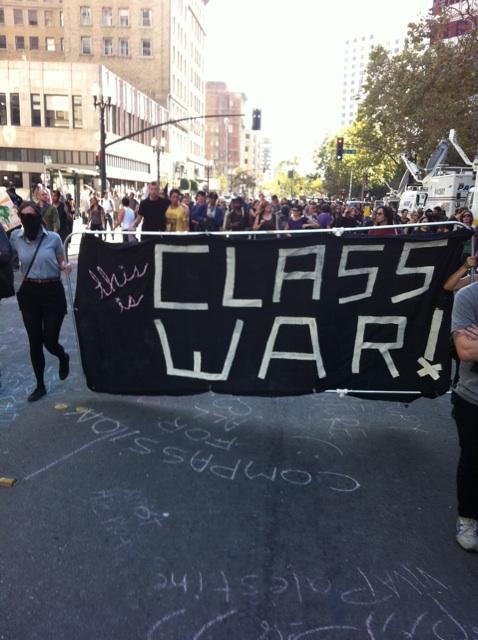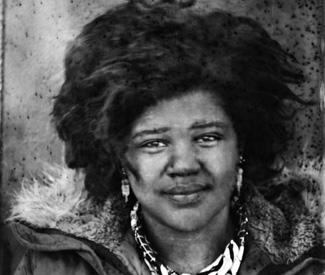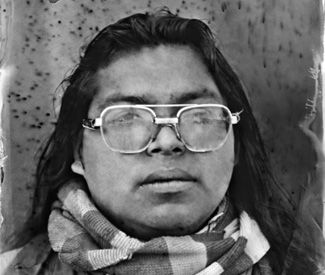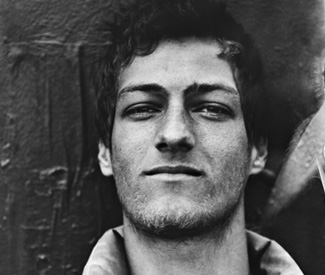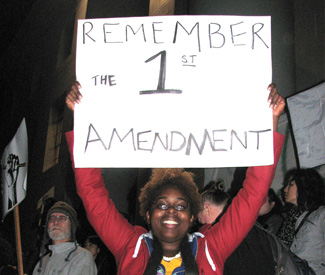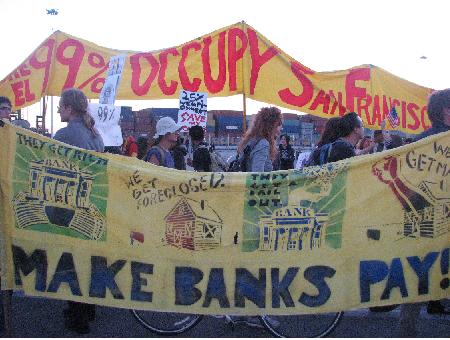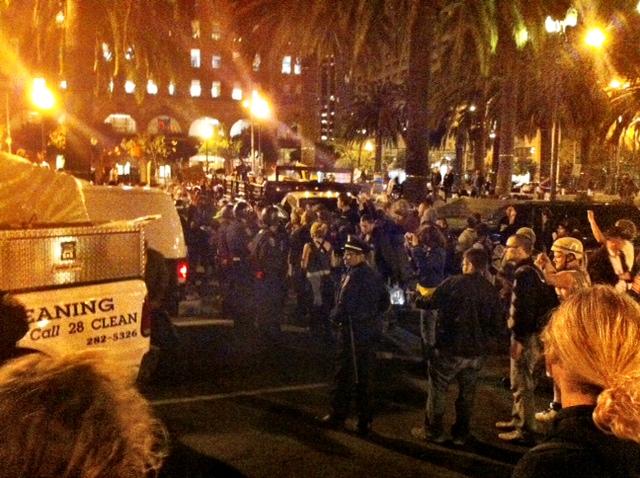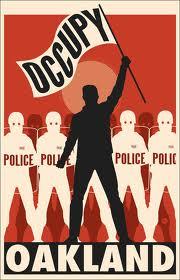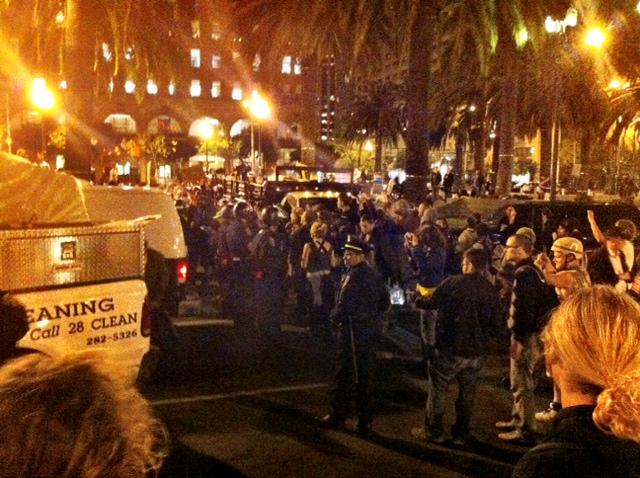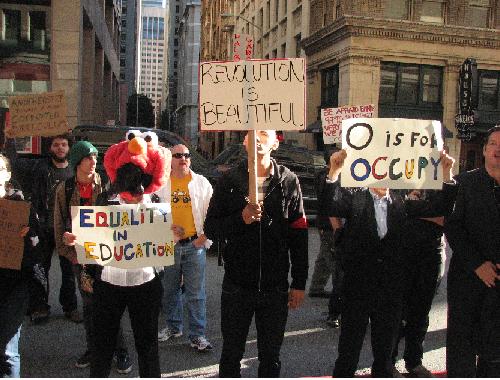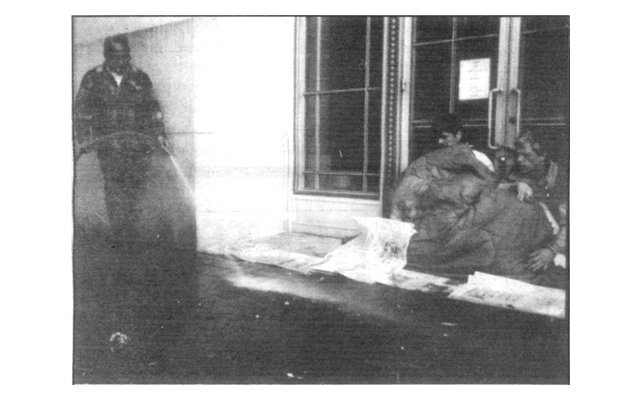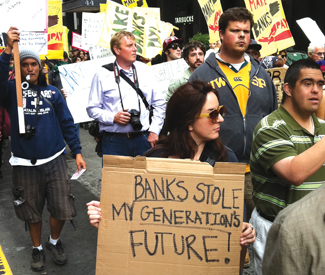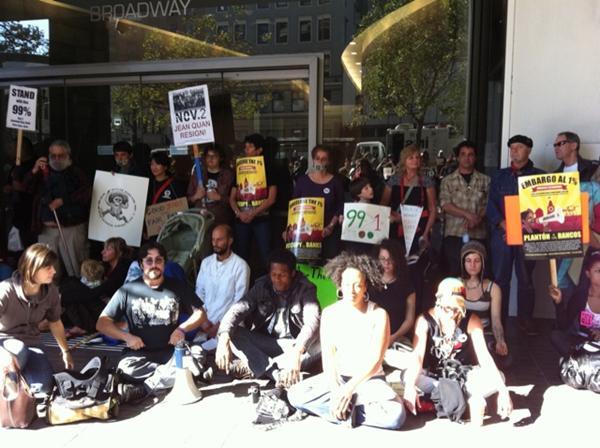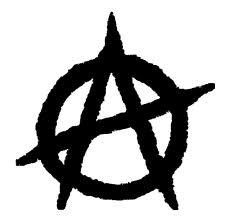Since club life is unpredictable, it’s a good idea to call ahead or check the venue’s website to confirm bookings and hours. Due to the holidays, club nights are subject to change. Prices are listed when provided to us. Submit items for the listings at listings@sfbg.com. For further information on how to submit items for the listings, see Picks.
WEDNESDAY 23
ROCK/BLUES/HIP-HOP
Brokedown in Bakersfield, California Honeydrops Slim’s. 9pm, $16.
Crooked Fingers, Strand of Oaks, Ian Fays Bottom of the Hill. 9pm, $12.
“Dark Sparkle’s 12th Annual Holiday Party” Cafe Du Nord. 9:30pm, $5.
Dead Winter Carpenters Boom Boom Room. 9:30pm, $10.
Jackie Dunn, Candace Roberts 50 Social Mason House, SF; www.50masonsocialhouse.com. 7pm.
Immortal Technique, Chino XL, Da Circle, DJ GI Joe Fillmore. 8pm, $22.50.
Indian, Creepers, Lycus Hemlock Tavern. 9pm, $7.
K. Flay Independent. 8pm, $14.
Jason Movrich Johnny Foley’s, 243 O’Farrell, SF; www.johnnyfoleys.com. 9pm, free.
tUnE-YarDs Regency Ballroom. 8pm, $23.
JAZZ/NEW MUSIC
Jazz organ party Royal Cuckoo, 3202 Mission, SF; www.royalcuckoo.com. 7:30pm, free.
Cat’s Corner with Nathan Diaz Savanna Jazz, 2937 Mission, SF; www.savannajazz.com. 9pm, $10.
Chris Amberger Trio Yoshi’s Jazz Lounge. 6pm.
Cosmo AlleyCats Le Colonial, 20 Cosmo Place, SF; www.lecolonialsf.com; 7-10pm.
Dink Dink Dink, Gaucho, Michael Abraham Amnesia. 7pm, free.
Greg Gotelli Quartet Mejool, 2522 Mission, SF; www.medjoolsf.com. 6-9pm, free.
Ricardo Scales Top of the Mark, 999 California, SF; www.topofthemark.com. 6:30pm, $5.
DANCE CLUBS
Robert Babicz, Oliver $, Justin Martin, Christian Martin Public Works. 9M, $10-$20.
Booty Call Q-Bar, 456 Castro, SF; www.bootycallwednesdays.com. 9pm. Juanita Moore hosts this dance party, featuring DJ Robot Hustle.
Club Shutter Elbo Room. Goth and death rock with DJs Nako, Omar, and Justin.
Full-Step! Tunnel Top. 10pm, free. Hip-hop, reggae, soul, and funk with DJs Kung Fu Chris and Bizzi Wonda.
Housepitality Icon Ultra Lounge, 1192 Folsom, SF; www.housepitalitysf.com. 9m. With Alland Byallo, Fil Latorre, Sharon Buck, and more.
Little Boots DJ set, Lo-Fi-Fink, Tenderlions Rickshaw Stop. 9pm, $13.
Mary Go Round Lookout, 3600 16th St, SF; www.lookoutsf.com. 10pm, $5. Drag with Suppositori Spelling, Mercedez Munro, and Ginger Snap.
Megatallica Fiddler’s Green, 1333 Columbus, SF; www.megatallica.com. 7pm, free. Heavy metal hangout.
No Room For Squares Som., 2925 16th St, SF; (415) 558-8521. 6-10pm, free. DJ Afrodite Shake spins jazz for happy hour.
Pre-Thanksgiving Party CIRCA, 2001 Chestnut, SF; www.1123circa.eventbrite. 9pm, $20. Euro, Latin, Brazilian, and Middle Eastern house beats with DJs Aykut, DR T, Youssef.
Vespa Beat Bliss Bar, 4026 24th St., SF; www.blissbarsf.com. 9pm, free. MSK.fm spins raregrooves, electroswing, and boogie.
THURSDAY 24
ROCK/BLUES/HIP-HOP
Terry Savastano Johnny Foley’s, 243 O’Farrell, SF; www.johnnyfoleys.com. 9pm, free.
JAZZ/NEW MUSIC
Blues organ party Royal Cuckoo, 3202 Mission, SF; www.royalcuckoo.com. 7:30pm, free.
Tom Lander & Friends Mejool, 2522 Mission, SF; www.medjoolsf.com. 6-9pm, free.
Savanna Jazz Trio with Sharman Duran & Jam Savanna Jazz, 2937 Mission, SF; www.savannajazz.com. 7:30pm, $5.
Stompy Jones Top of the Mark, 999 California, SF; www.topofthemark.com. 7:30pm, $10.
FOLK/WORLD/COUNTRY
Twang! Honky Tonk Fiddler’s Green, 1330 Columbus, SF; www.twanghonkytonk.com. 5pm. Live country music, dancing, and giveaways.
DANCE CLUBS
Afrolicious Thanksgiving Elbo Room. 9:30pm, $5. Afro-tropi, electric, samba, funk with DJs Pleasuremaker, and Senor Oz.
Meat: Thanksgiving DNA Lounge. 9:30pm, $2-$5. Heavy industrial beats and barbecue with BaconMonkey, Netik, Lexor, Unit 77, and more.
FRIDAY 25
ROCK/BLUES/HIP-HOP
American Economy, Syd’s Last Trip, Apache Thunderbolt Hotel Utah, 500 Fourth, SF; www.hotelutah.com. 9pm, $8.
Baxtalo Drum Amnesia. 9pm, $7-$10.
Cave, Jealousy Hemlock Tavern. 9:30pm, $7.
Jackie Greene, Walking Spanish Fillmore. 9pm, $25.50.
Happily Abandoned 50 Social Mason House, SF; www.50masonsocialhouse.com. 10pm.
Indubious Rockit Room, 406 Clement, SF; www.rock-it-room.com. 8pm, $10.
Latryx Independent. 9pm, $25.
Mayhem, Keep of Kalessin, Hate, Abigail Williams Regency Ballroom. 8pm, $32.
New Riders of the Purple Sage featuring Mookie Siegel, Moonalice Great American Music Hall. 9pm, $25.
Plaid, John Tejada Mezzanine. 9pm, $18.
Ronkat Spearman’s Katdelic Boom Boom Room. 9:30pm, $12.
Tumbleweed Wanderers, Buckeye Knoll, Hypnotist Collectors Bottom of the Hill. 9pm, $10.
X-Static Johnny Foley’s, 243 O’Farrell, SF; www.johnnyfoleys.com. 9pm, free.
Johnny Angel Wendell, McCabe and Mrs. Miller, Switchbacks Make-Out Room. 7:30pm. Benefit for Occupy SF and Occupy Oakland.
Rachael Yamagata, Mike Viola Slim’s. 9pm, $18.
JAZZ/NEW MUSIC
Black Market Jazz Orchestra Top of the Mark, 999 California, SF; www.topofthemark.com. 9pm, $10.
Euge Groove Showroom, 1000 Van Ness, SF; www.theshowroomsf.com. 7:30 and 10pm, $22.50.
Mikel B Jazz Combo 50 Social Mason House, SF; www.50masonsocialhouse.com. 7pm.
Savanna Jazz Trio Savanna Jazz, 2937 Mission, SF; www.savannajazz.com. 7:30pm, $5
Ways and Means of Committee Yoshi’s Jazz Lounge. 6:30pm.
DANCE CLUBS
Afro Bao Little Baobab, 3388 19th St, SF; (415) 643-3558. 10pm, $5. Afro and world music with rotating DJs including Stepwise, Steve, Claude, Santero, and Elembe.
“Biscuits & Gravy” Elbo Room. 10pm, free. Hip-hop, funk, and reggae with DJs Vinnie Esparza, Asti Spumanti, and Jonny Deeper.
Duniya Dancehall Blue Macaw, 2565 Mission, SF; (415) 920-0577. 10pm, $10. With live performances by Duniya Drum and Dance Co. and DJs dub Snakr and Juan Data spinning bhangra, bollywood, dancehall, African, and more.
Hubba Hubba Review: Murder DNA Lounge. 9pm, $12-$15. Burlesque mystery with live performance by Jill Tracy and DJ Star.
Old School Dance Party El Rio. 9pm. DJs spinning freestyle, new wave, hip-hop, and old school jams.
Teenage Dance Craze Knockout. 10pm, $4. Surf, garage, and soul with Russel Quan, dXthe Funky Granpaw, and Okieroan Scott.
Vintage Orson, 508 Fourth St, SF; (415) 777-1508. 5:30-11pm, free. DJ TophOne and guest spin jazzy beats for cocktalians.
SATURDAY 26
ROCK/BLUES/HIP-HOP
“Funksgiving” Red Devil Lounge. 8pm. With Planet Booty and i can dress myself.
Jackie Greene, An Evening With. Fillmore. 9pm, $25.50.
Heroes of the New Media 50 Social Mason House, SF; www.50masonsocialhouse.com. 10pm.
Holdup, A B & the Sea, Finish Ticket, Young Science Slim’s. 9pm, $15-$18.
I The Mighty, Via Coma, K Sera, Fever Charm Bottom of the Hill. 8:30pm, $12.
Necroveck, Rough Mix, Rejects Thee Parkside. 3pm, free.
Orgone, Allen Stone Great American Music Hall. 9pm, $16.
Pre-Legendary and the Dreamers, Mist and Mast, Billy and Dolly Hemlock Tavern. 9:30pm, $7.
Pterodactyl, Bad Bibles El Rio. 9pm, $7.
Rock Soup Ramblers Cafe Royale, 800 Post, SF; (415) 641-6033. 8pm, free.
Tall Shadows Johnny Foley’s, 243 O’Farrell, SF; www.johnnyfoleys.com. 9pm, free.
Vinyl, Sans Pablo Boom Boom Room. 9:30pm, $12.
JAZZ/NEW MUSIC
Broken Strings Yoshi’s Jazz Lounge. 6pm.
Erik Jekabson, Mike Zilber Thanksgiving Group Savanna Jazz, 2937 Mission, SF; www.savannajazz.com. 7:30pm, $5
Shelley MacKay and the Tom Shaw Trio Cafe Claude, Seven Claude, SF; www.cafeclaude.com. 7:30pm, free.
FOLK/WORLD/COUNTRY
Brothers Calatayud & Little Brasil with the Samba Da Terra Dancers Cafe Du Nord. 9:30pm, $15. Thanksgiving samba party also with Jose Rivera, Coelho & Ridnell, and more.
MamaKoatl, Maria Loreto, Marta Sevilla Dance Mission Theater, 3316 24th St., SF; www.dancemission.com. 6pm, $10.
Gypsy Moonlight Band Riptide, 3639 Taraval, SF; www.riptidesf.com. 10 and 11:15pm, free.
Saturday Night Salsa Ramp, 855 Francois, SF; www.facebook.com/therampsf. 5:30pm, $10.
DANCE CLUBS
Afro Bao Little Baobab, 3388 19th St, SF; (415) 643-3558. 10pm, $5. Afro and world music with rotating DJs including Stepwise, Steve, Claude, Santero, and Elembe.
Bootie SF: Post-Thanksgiving Madness DNA Lounge. 9pm, $8-$15. Mashup burlesque show by Hubba Hubba Revue, Nutty house, electro, breaks, and funk with DJs Ben Holder, Bill Dupp, Trevor Sigler.
4ONEFUNKTION Elbo Room. 10pm, $5. Hip-hop and funk with the Bangerz, Custo, Goldenchyd, Weezy vs. F.A.M.E., and more.
Go Bang! Deco Lounge, 510 Larkin, SF. 9pm, $5. Atomic dancefloor disco action with Ken Vulsion, Nicky B, Tres Lingerie, Steve Fabus, Sergio Fedasz, and more.
Mango El Rio. 3-8:30pm, $8-$10. Sweet sexy fun for women. DJs Edaj, Marcella, Olga, and La Coqui.
Sacred Dust: Giving Thanks Edition Public Works. 10pm, $10-$15.
SUNDAY 27
ROCK/BLUES/HIP-HOP
Between the Buried and Me, Animals As Leaders, TesseracT Fillmore. 8pm, $20.
Happy Body Slow Brain, Stomacher, Case in Theory, Twin Suns Bottom of the Hill. 8pm, $10.
Poor Bailey, Yawpers, Rabbles Hemlock Tavern. 7pm, $6.
Stan Erhart Band Johnny Foley’s, 243 O’Farrell, SF; www.johnnyfoleys.com. 9pm, free.
JAZZ/NEW MUSIC
Blues organ party with Lavay Smith and Chris Siebert Royal Cuckoo, 3202 Mission, SF; www.royalcuckoo.com. 7:30pm, free.
Tom Lander & Friends Mejool, 2522 Mission, SF; www.medjoolsf.com. 6-9pm, free.
Little Brown Brother Blues & Jazz Jam Savanna Jazz, 2937 Mission, SF; www.savannajazz.com. 7pm, $5.
FOLK/WORLD/COUNTRY
Sunday Night Salsa Ramp, 855 Francois, SF; www.facebook.com/therampsf. 5:30pm, $10.
Twang Sundays Thee Parkside. 4pm, free. With Georgia Spurs. 4pm, free.
Yaelisa Y Caminos Flamencos Yoshi’s. 7pm, $20-$25.
DANCE CLUBS
Batcave Club 93, 93 9th St, SF 10pm, $5. Death rock, goth, and post-punk with Steeplerot, XChrisT, Necromos and c_death.
Dub Mission Elbo Room. 9pm, $6. Dub, dubstep, reggae, dancehall with DJ Sep, Maneesh the Twister, and guest Jah Yzer.
45Club Knockout. 10pm, free. Funky soul records with Dirty Dishes, English Steve & dX the Funky Granpaw.
Jock Lookout, 3600 16th St, SF; www.lookoutsf.com. 3pm, $2. Raise money for LGBT sports teams while enjoying DJs and drink specials.
La Pachanga Blue Macaw, 2565 Mission, SF; www.thebluemacawsf.com. 6pm, $10. Salsa dance party with live Afro-Cuban salsa bands.
MONDAY 28
ROCK/BLUES/HIP-HOP
Damir Johnny Foley’s, 243 O’Farrell, SF; www.johnnyfoleys.com. 9pm, free.
JAZZ/NEW MUSIC
Bossa Nova Tunnel Top, 601 Bush, SF; (415) 722-6620. 8-11:30pm, free. Live acoustic Bossa Nova.
Candye Kane Yoshi’s. 8pm, $15.
Sundra Manning & Russo Alberts Trio Yoshi’s. 8pm, $12.
DANCE CLUBS
Death Guild DNA Lounge. 9:30pm, $3-5. Gothic, industrial, and synthpop with Joe Radio, Decay, and Melting Girl.
M.O.M. Madrone Art Bar. 6pm, free. DJs Timoteo Gigante, Gordo Cabeza, and Chris Phlek playing all Motown every Monday.
Sausage Party Rosamunde Sausage Grill, 2832 Mission, SF; (415) 970-9015. 6:30-9:30pm, free. DJ Dandy Dixon spins vintage rock, R&B, global beats, funk, and disco at this happy hour sausage-shack gig.
TUESDAY 29
ROCK/BLUES/HIP-HOP
Atomatronic, Headphone Union Boom Boom Room. 9:30pm, free.
Jefferson Bergey 50 Social Mason House, SF; www.50masonsocialhouse.com. 10pm.
Will Downing Yoshi’s. 8pm, $45.
Faster Faster, White Cloud Elbo Room. 9pm, $4.
Girl in a Coma, Fences Independent. 8pm, $15.
John Lawton Trio Johnny Foley’s, 243 O’Farrell, SF; www.johnnyfoleys.com. 9pm, free.
Lady Lazarus, Pregnant, Jib Kidder Hemlock Tavern. 9pm, $6.
Melt-Banana, Retox, Peace Creep Bottom of the Hill. 9pm, $14.
Metal Mother, Horns of Happiness, Mortar and Pestle, Birdseye Cafe Du Nord. 8pm, $10.
My Body Sings Electric Kimo’s. 9pm.
DANCE CLUBS
Eclectic Company Skylark, 9pm, free. DJs Tones and Jaybee spin old school hip hop, bass, dub, glitch, and electro.

